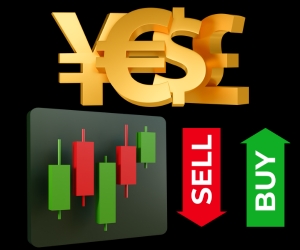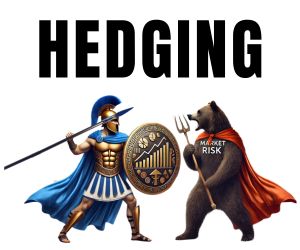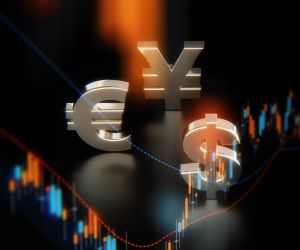PAR VALUE IN CURRENCY AND FOREX TRADING
Par value is a reference point—the nominal or face value assigned to a currency or security. While it rarely matches market prices, it provides a baseline for contracts, accounting, and valuation. In foreign exchange, par value has historical roots in fixed-rate regimes and still influences how institutions think about stability. In this article, we explain what par value means, explore where it still matters in finance and currency markets, and walk through simple examples to show how traders can use the concept in practice.

What Is Par Value
Par value, sometimes referred to as face value or nominal value, is the fixed amount assigned to a currency, bond, or share by the issuing authority. It is not the same as market value, which fluctuates with supply, demand, and sentiment. Instead, par value functions as a reference point. In currencies, it historically meant the official exchange rate under fixed regimes; in securities, it is the contractual figure printed on the bond certificate or share document. While market participants rarely transact at par, the concept anchors rules, contracts, and legal frameworks that underpin finance.
Origins in Fixed Exchange Systems
The idea of par value in foreign exchange goes back to the gold standard and later the Bretton Woods system. Under Bretton Woods, each currency was assigned a par value in terms of the U.S. dollar, which itself was tied to gold at $35 per ounce. Countries were required to maintain their exchange rates within a narrow band around that par value, adjusting policies or intervening in markets if rates drifted too far. Par value was thus the formal anchor for stability in the international monetary system. Although that regime ended in the early 1970s, the notion of par as a benchmark still lingers in central bank frameworks and IMF references.
Par Value in Securities
In the world of bonds, par value is the amount the issuer promises to repay at maturity—commonly $1,000 per bond in U.S. markets. A bond trading at par is priced exactly at that face value. If demand pushes the bond higher, it trades at a premium; if concerns lower demand, it trades at a discount. The coupon payments are calculated against par, not market price, making it central to yield calculations. Similarly, in equities, par value is the nominal amount assigned to a share when created. While often a token sum in modern markets, it forms part of the legal capital structure of a company.
Distinguishing Par from Market Price
For traders, the distinction between par and market value is crucial. Par value is static and set by law or contract. Market value reflects real-time forces—demand, supply, sentiment, macro trends. For example, a bond may have a par of $1,000, but if interest rates rise, its market price may fall to $950. The bondholder will still receive $1,000 at maturity, but the yield and mark-to-market value shift in the meantime. In currencies, the official par may be a historical relic, while the floating exchange rate captures the market’s true assessment. Understanding both helps traders interpret official statements, assess risks, and evaluate pricing anomalies.
Why Par Value Matters Conceptually
Even if par does not reflect reality on the screen, it matters because it provides a baseline. It standardises contracts, ensures clarity in legal documents, and offers a neutral point of reference. Without par, there would be greater ambiguity in obligations and claims. For regulators, par helps maintain systemic order; for issuers, it guarantees that securities have a consistent anchor; and for traders, it creates benchmarks against which relative value can be judged. In short, par is the still point around which the volatility of market pricing revolves.
Modern Relevance for Forex Traders
For today’s FX traders, par value is less about daily execution and more about context. It surfaces in discussions of central bank credibility, fixed or semi-fixed regimes, and historical baselines. When a currency peg is established, it is often expressed as a par value—say, 3.75 Saudi riyals per U.S. dollar. When analysts discuss deviations from fair value, par provides a mental anchor. Even when currencies float freely, understanding the legacy and definition of par helps traders grasp why certain numbers matter in official discourse and why some levels carry symbolic weight in markets.
Where It Matters
Par value continues to play an important role in areas where stability, predictability, and contractual clarity are essential. Even in an age of floating exchange rates and highly liquid markets, par serves as the legal or institutional anchor in multiple corners of finance. Traders who dismiss par as an outdated relic risk overlooking its impact in policy, accounting, and structured instruments. This section highlights the domains where par value still matters and how its influence filters into the practice of modern Forex trading.
Central Bank Frameworks
For central banks, par value is a key reference point in fixed or managed exchange rate systems. A peg, such as the Hong Kong dollar’s tie to the U.S. dollar, is essentially a declared par value, with intervention bands around it. Even when pegs are flexible, the official par remains the baseline for policy. Institutions such as the IMF also use par values when describing Special Drawing Rights (SDRs) and member commitments. As a result, traders must appreciate that par sits at the foundation of some of the world’s most important currency arrangements.
Bond and Debt Markets
In bonds, par value is central to pricing, yield calculations, and repayment. The distinction between par, premium, and discount bonds shapes returns and risk. Corporate treasurers and sovereign debt managers alike design issuance programmes around par values, ensuring standardisation. For traders, understanding par is vital for comparing bonds across maturities and issuers, as well as for gauging whether relative value exists in the secondary market. Because bonds are a major asset class that interacts with currency markets via yield differentials, the role of par cannot be ignored.
Equity and Corporate Finance
While equity markets rarely trade with reference to par today, par value continues to feature in corporate charters and legal documentation. In many jurisdictions, companies must assign a par value to shares, even if it is a nominal sum such as $0.01. This ensures a minimum level of capitalisation and provides a framework for shareholder rights. Investors may not trade based on par, but it remains embedded in the corporate structures that underpin financial markets.
Derivatives and Structured Products
Par values underpin contracts in derivatives markets. Options, swaps, and forwards often define notional amounts with reference to par. Structured notes may specify repayment of par plus coupons, ensuring investors know their minimum entitlement. For Forex-linked products, the par amount defines the size of exposure and guarantees clarity in settlement. This consistent anchor across instruments reduces ambiguity and ensures smoother functioning in markets where complexity is rising.
Accounting and Legal Contexts
Accountants and lawyers continue to rely on par values in balance sheets, corporate filings, and debt covenants. These references influence investor confidence, ratings, and legal claims in the event of restructuring. For currencies, legal par values can determine how debts are redenominated during crises, as seen in Argentina or Eastern Europe. Traders following sovereign risk must understand that par values are not just academic—they can influence how courts, regulators, and counterparties assess obligations in high-stakes scenarios.
Symbolic Importance in Currency Markets
Even when markets float freely, par values carry symbolic significance. Central banks often publish “reference rates” that serve as unofficial par values, watched by businesses and traders alike. When the market strays too far, speculation builds about whether intervention will occur. This psychological role ensures that par remains part of the language of FX, even in a world dominated by real-time quotes and volatile flows.
Simple FX Examples
To make par value tangible for Forex traders, it helps to work through practical illustrations. These examples show how par has influenced real-world exchange arrangements and how the concept still appears in trading discussions today. Although modern FX relies on floating rates, the echoes of par can still be heard in how traders interpret levels, assess pegs, and think about fair value. Below we examine some simple but telling cases.
Par in a Fixed Exchange Rate
Imagine a central bank sets its par value at 10 units of local currency per U.S. dollar. The market is allowed to trade within a narrow band—say, 9.95 to 10.05. If the rate drifts to 10.06, the central bank intervenes by selling dollars and buying its own currency to bring the exchange rate back toward par. For traders, this means the range of movement is defined, and speculation often centres on whether the authorities will defend or abandon the par. This framework remains alive in places like Hong Kong, where the HKD is pegged to the USD at 7.80 with a tight band.
Bond Example: Trading at Par, Premium, and Discount
Consider a bond with a par value of $1,000 and a 5% coupon. If interest rates in the economy are also at 5%, the bond trades at par—exactly $1,000. If rates fall to 3%, investors bid up the price of the bond above par, to perhaps $1,050, because the fixed coupon is now more attractive. If rates rise to 7%, the bond falls below par, perhaps to $950, since its coupon lags behind market yields. This example demonstrates how par serves as the baseline, even when market conditions drive prices away from it. Traders constantly assess the relationship between par and current pricing to judge value.
Currency Peg Example: Saudi Riyal
The Saudi riyal has been pegged at a par value of 3.75 per U.S. dollar since the 1980s. Despite oil price volatility, the peg has endured, supported by substantial reserves. For traders, this means USD/SAR typically trades flat, but forwards and derivatives often price in the risk that the peg could eventually shift. Here, par is more than symbolic—it is a level that anchors expectations and guides trading strategies, even in products designed to speculate on its potential breakdown.
Psychological Parity Levels
In free-floating markets, traders sometimes talk about “parity” between major pairs such as EUR/USD at 1.00. While not an official par value, such levels carry symbolic weight, as they imply one-to-one equivalence. Market reactions around these levels often resemble those around formal par values: order clustering, volatility spikes, and speculative positioning. For example, when EUR/USD dipped below parity in 2022, it attracted significant headlines and flows, despite the absence of any formal peg. The psychological link to the idea of par underscores its enduring relevance.
Learning Takeaways for Traders
These examples reveal why traders should not dismiss par value as an archaic concept. Whether in pegged regimes, bond pricing, or psychological parity levels, par continues to inform expectations, guide policies, and frame conversations. Knowing how to interpret par references, and where they matter most, helps traders navigate both the technical and narrative dimensions of Forex markets. In practice, this means recognising that beneath today’s floating rates, the idea of par still shapes how markets think about value and stability.








